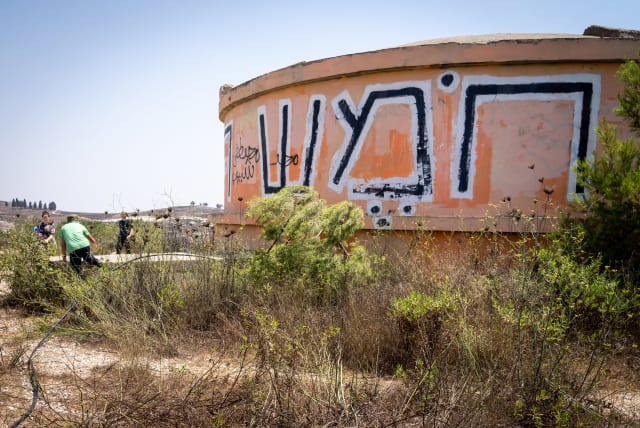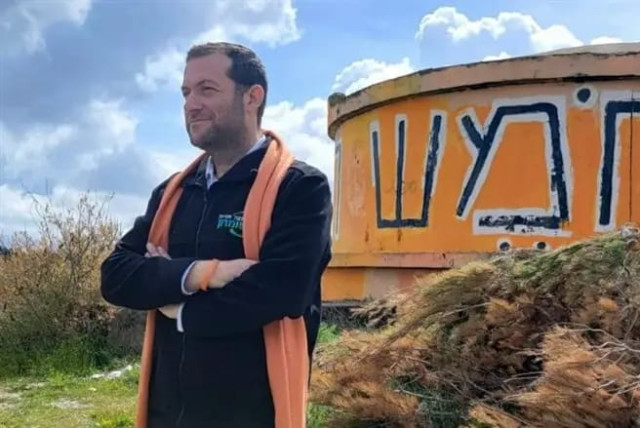Court says it won’t block rebuilding of West Bank’s Homesh on state land

“We order the deletion of the petition after it has been exhausted in its current form,” the court said.
The High Court of Justice does not intend to stop settlers from rebuilding a yeshiva on state land on the controversial West Bank hilltop of Homesh, located between Nablus and Jenin, it said in an opinion issued on Wednesday. But it left the door open for further petitions to be filed on the matter.
The court rejected a 2019 petition filed by the left-wing organization Yesh Din against the illegal construction of a yeshiva on that hilltop due to changing circumstances in Israel’s legal landscape and on the hilltop itself.
“We order the deletion of the petition after it has been exhausted in its current form,” the court said.
In doing so, it did not take steps to ensure that Palestinians would retain access to their property on the same hilltop.
Yesh Din turns to the High Court
Yesh Din had turned to the court on behalf of Palestinian landowners from the nearby village of Burka who had been barred from farming their land due to the presence of the unauthorized Homesh yeshiva on their property.

It had argued that the illegally built yeshiva should be removed: firstly, because it was on private property; and secondly, because the 2005 Disengagement Law barred the presence of Israelis on the site.
The Homesh hilltop had been the site of one of the four northern Samaria settlements Israel evacuated after the Disengagement from the Gaza Strip in 2005. In the last half a year, the yeshiva was relocated to a small plot of state land on the hilltop.
The state has affirmed to the court its intention to legalize the yeshiva. The Samaria Regional Council has been given authorization over state land on the hilltop and has begun the bureaucratic process of legalizing the seminary.
The Knesset has also repealed the portion of the Disengagement Law that prevented Israelis from accessing Homesh and the three other destroyed Samaria settlements: Sa-Nur, Ganim, and Kadim.
In dismissing Yesh Din’s petition, the justices said neither of the arguments on which the petition was based existed. Furthermore, they said, the state has promised to ensure Palestinian access to their farmland on the hilltop.
“We have received a statement from the state explaining that there is no obstacle facing the aforementioned rights holders,” the court said. “We presume the state will act to guarantee the right of access as mentioned.”
Right-wing politicians and settler leaders hailed the court’s dismissal of the case as one more victory on the road to rebuilding the four settlements evacuated in 2005, starting with Homesh.
“Finally, finally, justice has been done,” said Samaria Regional Council head Yossi Dagan, who is a Sa-Nur evacuee. “When the government makes a clear and unequivocal Jewish and Zionist statement, the result is clear.”
“The government announced it was going to regulate the yeshiva,” he said. “The delusional petition of the extreme Left against Homesh was, therefore, thrown into the dustbin of history.”
“The future belongs now to the restoration and reconstruction of the [four] northern Samaria settlements,” he added.
“The Israeli flag will fly again in the four settlements that were displaced in northern Samaria,” Dagan said. “They will be rebuilt, and children will play again in the streets of the flourishing settlements.”
Helping expropriate land from the Palestinians
Yesh Din said the court was helping Israel expropriate land from the Palestinians. The authorization of the Homesh yeshiva was just the first step toward rebuilding the actual settlement, it said.
Homesh was first established in 1978 and was largely built on private Palestinian land belonging to residents of Burka.
After its demolition, the High Court of Justice in 2013 granted Palestinian landowners the right to farm their property.
“While throughout Israel, people are fighting to protect the High Court as a symbol of democracy, today the justices proved that, for the Palestinians in the West Bank, there is no protector and no law,” Yesh Din said.
It said it had filed two affidavits with the court on Tuesday from former IDF Central Command commanders who said rebuilding Homesh would “constitute a security burden” and would involve “further violence and further plundering of Palestinian lands without any security justification.”
“Even these positions did not convince the justices to put an end to plundering and expropriation,” Yesh Din said. “The shameful decision of the Supreme Court judges is further evidence of the apartheid rule that is established in the territories and which has become the norm with the approval of the High Court.”
